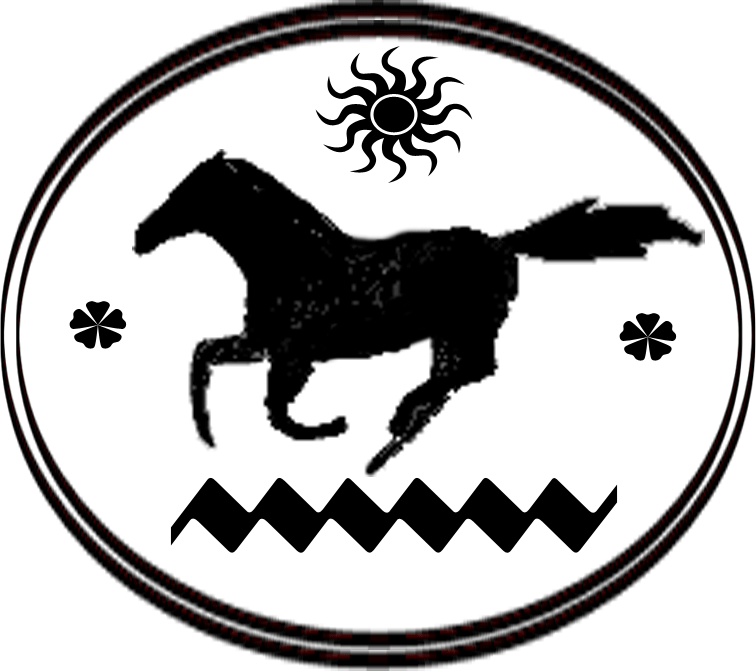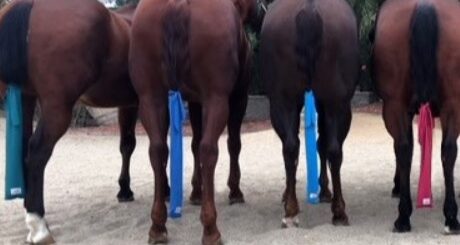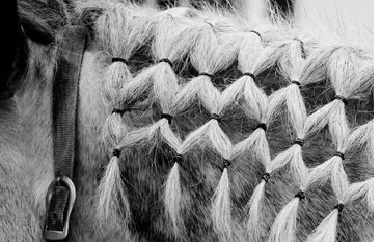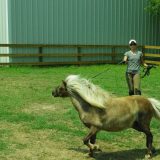What to wear for a horseback riding lesson or why reliable equestrian outfit is important
Your equestrian outfit should include a helmet, riding boots, comfortable pants (jeans or
breeches) and a long sleeve shirt.
In this article I’ll try to explain what to wear for a horseback riding lesson or how to choose suitable Equestrian outfit.When you for the first time decide to take some horseback riding lessons, bear in mind that the clothing you wear or your equestrian clothes around horses affects not only your looks but your safety as well. This fact may not seem obvious at first, but your apparel can protect you from errant hooves, falls to the ground, and nasty chafing. Riding is an inherently dangerous sport.
Helmets
Let’s start with your head. Helmets are probably the most important part of your wardrobe if you plan to ride and usually the most expensive. Although disciplines in which jumping is not a part often do not require them, I consider this unsafe. Of the three people whom I knew personally who died of head injuries incurred while riding, none were jumping, and one was riding her own old quiet horse at the walk.

A stable that run horse riding lessons should have safe, adjustable helmets available for loan during your early lessons. In the event of a fall, a helmet is the only thing between your skull and the hard ground. Falling off the horse accounts for most injuries, but there is also the potential to get kicked, trampled, or stepped on by a one-ton animal. Stories abound of riders who came off their horses without helmets and suffered serious brain injuries as a result. Nearly all riding equipment or apparel is designed with some measure of protection in mind, from helmets that protect your head to chaps and tall boots that protect your legs.
If you still aren’t convinced, consider this: A fall from a horse’s back can take place at high speed. Imagine jumping out of your car, head first, at 30 miles per hour. That’s how fast you may be going if you fall off a galloping horse. For the sake of your brain, always wear a helmet when you ride.
Unfortunately, helmets are much more accepted in the English-riding world than the Western one. The deep bucket of a Western hat offers a limited amount of protection — and rarely stays on when you fall off your horse. Attempts to make a protective helmet that looks like a Western hat have not been widely accepted. Typically, riders in Western gear simply wear the basic helmets when they ride recreationally. However, when they ride in Western show classes, riders wear Western hats, not safety helmets.
The style of riding you do can determine the type of helmet you wear. Or if you aren’t showing and are just schooling or going on a trail ride, you can wear a regular trail helmet.
Remember, that head injuries from kicks and falls account for the largest percentage of all serious injuries resulting from horseback riding accidents.
While stables are usually happy to loan you a riding helmet for a few lessons, they prefer riders to have their own hats. There is always the chance that the few hats they have will all be in use when you arrive for your first horseback riding lesson. Unless you have your own or can borrow one from another rider, you will be unable to ride at that time. The hat you should buy if you taking a horse riding lesson is called a schooling helmet.
Like protective headgear sold for other sports, it is intended as a piece of safety equipment, not wearing apparel. A variety of makes and models are available, all of which have a hard crown, a visor, and a chinstrap or harness. The hat should fit snugly enough so that it doesn’t slip if you takea fall, and it should be worn at all times when you are riding. Don’t try to make due with a bicycle helmet. True, it’s protective headgear, but it protects against a different type of head injury. So bike helmets don’t protect the part of your head most affected in a fall from a horse. In the U.S., the American Society for Testing and Materials (ASTM) sets standards for helmet construction. If a helmet meets these standards, it receives a seal of approval from the Safety Equipment Institute (SEI); buy only an SEI approved helmet. And don’t waste your money by not wearing your helmet properly. It shouldn’t rock back and forth on your head but should rather be stable. The chin strap should be snug and not hanging loose.

Helmets come in all sorts of styles and even a few colors these days. There are different designs that are considered more appropriate than others for different types of riding. The velvet kind with the little button on the top is the style you’ll see on the fox hunting grounds. Schooling helmets tend to have a lot of open ventilation, and helmets are even used in dressage competitions. You can accessorize your helmet with decorative helmet covers, rain covers, and even a cool pack to keep your helmeted head extra cool in hot temperatures.
If you experience a fall and hit your head while wearing your helmet, buy a new one as soon as you can. An impact can compromise the helmet’s effectiveness.
Boots
The second item to purchase now is a pair of riding boots. Boots come in both English and Western styles that are traditional and popular. English riders in hunter/jumper or dressage competitions wear knee-high leather boots. Knee-high boots also come in rubber for everyday and schooling wear. Ankle-high riding boots, often called pad-dock boots, are also popular. Western-style boots are probably one of the most common icons of the cowboy tradition. They come in various styles as well.

Riding boots should have a significant heel to prevent your foot from slipping completely through the stirrup. Avoid rubber-soled boots, which can get slippery. Leather is best. Never wear sneakers when riding or working with horses. They are slippery in the stirrup, and they provide absolutely no protection if you are stepped on.
Beginners, especially children, usually wear for the first horseback riding lesson paddock boots, which are ankle-high leather boots that lace up the front and have a hard toe and an oxford-style heel. Prices vary here, too. In the moderate range, the uppers will be of lower-quality leather and the sole will probably be of synthetic material or rubber, which is perfectly adequate. Some makers offer a choice of colors, too, including black, brown, and gray. An alternative to paddock boots is high black riding boots. Beginners in horseback riding frequently wear an inexpensive black rubber version. On the plus side, these can survive the abuses of mud, dust, wetness, and other common stable conditions. However, many instructors dislike them because they often fit poorly through the calf area, and there is no “give” in the instep so that a rider can keep her heels down. Also, the toe is not reinforced to protect yourself from a horse’s misstep. Before you buy rubber boots, ask your instructor how he feels about them. If your budget can handle it, leather is a better choice, though it can be expensive.

Remember, wear heavy boots when working on the ground and riding boots when you’re in the saddle. Never ride in a saddle with tennis shoes. You may see people doing it, but that doesn’t mean the practice is safe. Riding boots made especially for equestrians are the best footwear for riding because they’re equipped with a heel that keeps your foot from sliding through the stirrup! There are some good quality paddock boots out there, for example Equistar boots or Ariat boots.
Safety Vests

Not many recreational riders wear safety vests, but if you plan to do a lot of jumping or start a lot of young horses under saddle, a safety vest is a worthwhile investment. They can help pad your fall and protect your internal organs if you fall. Vests that meet ASTM safety standards are available.
Shirt

When just hanging around the stable, you can wear just about any shirt you want.
Long, baggy shirts that aren’t tucked in can get caught on parts of the saddle, arena gates, and stall latches. You’re safer in a well-fitted shirt that’s tucked in.
Riding is a physical activity, so you want to wear materials that breathe well and are absorbent. Cotton lets you stay cooler and drier.
Long-sleeved shirts can protect your skin from the sun. I know quite a few equestrians who are dealing with skin cancer as a result of spending hours in the sun with exposed skin.
For that reason it’s best to wear a shirt that has sleeves that cover your shoulders and upper arms.
Pants

When the weather is hot, you may feel tempted to ride in shorts instead of donning a pair of riding tights or jeans. But keep in mind that if you’re wearing shorts, your bare skin will rub against the leather of your saddle and give you some very unpleasant chafing.
Western riders tend to go for jeans. If you wear jeans for riding, look for brands that have the wide, double-stitched seam only on the outside of the leg and have a simple seam on the inside. For example, check out
One way to save wear and tear on your jeans is to wear chaps.

Chaps are very common in Western-style riding apparel.
English riders typically wear riding breeches, which are extremely comfortable and come in stretch fabrics intended to fit snugly.
Pants should be stretchy and loose enough in the seat area to allow for following the horse’s movement. Their second purpose is to protect the inside of your lower leg from being chafed by the stirrup leather, especially in English saddles, so the lower pant leg should be fairly snug. Avoid pants that have a thick inseam for the same reason. Stretch jeans or leggings work well for most people. If you are very sensitive, you can wear tights or knee socks to protect your lower legs. Be sure to tell your instructor if you have discomfort because the tension it causes can lead to further problems. Once you have committed to riding, there are many articles of clothing to choose from for comfort and leg protection, but most of them are expensive and unnecessary for beginners. There are lots of scratchy things around a stable, including some horses who like to nibble lovingly on you.












